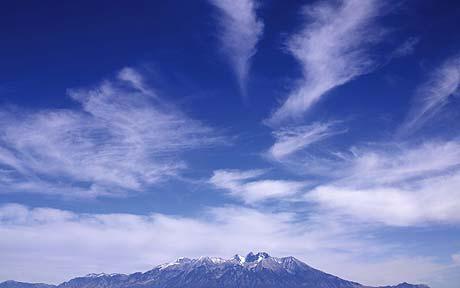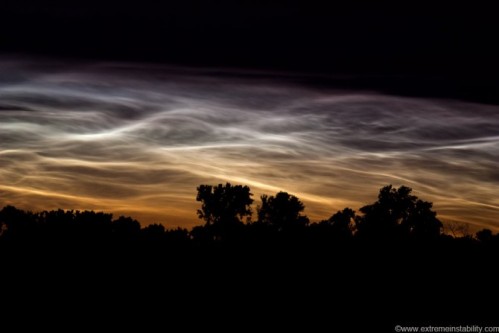
Sufferers Say Mysterious Colored Fibers Grow on Their Skin, Like Hair
Those living with Morgellons disease describe a mysterious fibrous material running through their skin.
ABC | Jan 16, 2008
The Centers for Disease Control and Prevention announced today that it is launching a study to learn about an unexplained condition that causes people to feel as if they have foreign substances growing from their bodies.
People with the condition, referred to as Morgellons disease, say they have fibers and other inorganic material growing out of their skin.
“We earnestly want to learn more about this unexplained illness, which affects the lives of those who suffer from it,” said Dr. Michele Pearson, principal investigator leading the study for the CDC, in a press release. “Those who suffer have questions, and we want to help them.”
“We have a team of epidemiologists, laboratorians and pathologists to carry out the study,” Pearson said.
The study will be conducted in conjunction with Kaiser Permanente’s Northern California Division of Research. For more information, CLICK HERE to visit the CDC’s Unexplained Dermopathy Web site.
Watch the story tonight on “Nightline” at 11:35 p.m. ET and “Good Morning America” Thursday at 7 a.m.
In 2006, a number of Morgellons sufferers told ABC News in interviews that when they consulted doctors, they received diagnoses they called wrong or dismissive. Brandi Koch, the wife of former Major League Baseball player Billy Koch, said that she felt as if she were living in a horror movie, claiming she had colored fibers coming out of her skin.
Koch, of Clearwater Beach, Fla., said that her life was good until one day in the shower when she noticed something strange — tiny fibers running through her skin.
“The fibers look like hair, and they’re different colors,” Koch said.
Koch said she knows that what she experienced “sounds crazy,” but it’s true. “If I had a family member call me up and say, ‘I have this stuff,’ I’d say, ‘I’m sending a straitjacket over. You need some help,'” she said.
Anne Dill described a similar condition. Looking at Dill’s life in Florida, she seemed to be living the American dream — her three daughters excelled in sports and were straight-A students.
But life in the Dill household was far from idyllic. Anne’s 40-year-old husband, Tom, died in January 2006, and she believes his death was due to a contagious illness that has infected her entire family.
Dill described her family’s skin: “There’s this fibrous material. It’s in layers.” Dill said the skin on their hands was particularly bad, very swollen and itchy, and said it felt as if bugs were crawling underneath the skin.
Consulting Doctors
Dr. Greg Smith of Gainesville, Ga., has been a pediatrician for the past 30 years. He claimed that a fiber was coming out of his big toe, and he had video footage to prove it.
“It felt like somebody stuck a pin in my toe and wiggled it, and it just continued to hurt,” Smith told ABC News in 2006.
He said he never thought he had bugs. “I’ve certainly had those crawling sensations, and the fibers which come out of the skin are really bizarre, and really odd.”
Smith was handed over to a hospital psychiatrist when he went to the emergency room complaining of a fiber in his eye. He admits that he, too, would be skeptical if a patient came to him with the same story.
“I would wonder if they’d taken their medicine that day. It makes no sense. It’s totally bizarre. It’s something that — just telling the story is so outlandish on the face of it — that no one would believe it,” Smith said. Dill’s doctor told her to stop scratching, even though many of her sores were in places she could not reach.
Koch went to the Mayo Clinic, where doctors didn’t believe that the fibers she’d brought them had grown from her body.
“I saw the infectious disease doctor, and I showed him some samples that I had and he snickered,” she said. “I can’t go through another doctor blowing me off or looking at me like I’m crazy. I know I’m not.”
Dr. Vincent DeLeo, chief of dermatology at New York’s St. Lukes-Roosevelt Medical Center, weighed in on what he’d say to someone who came to him with this condition. “I don’t think this is any different than many patients I’ve seen who have excoriations and believe that there is something in their skin causing this,” he told ABC News in 2006.
DeLeo said the open lesions were most likely a result of scratching the skin.
Relying on Your Own Research
But biologist Mary Leitao refused to accept the medical skepticism surrounding Morgellons.
Leitao’s son, Drew, was just 2 years old when Leitao noticed an odd sore on his lip that would not heal.
“He very simply said ‘bugs,’ and he pointed to his lips,” said Leitao.
Leitao never expected to find herself at the center of a medical storm. But when her son complained about the strange sore, the biologist, who once ran the electron microscope at Massachusetts General Hospital in Boston, did what any scientist would do. She took a closer look.
“What I saw were bundles of fibers, balls of fibers,” Leitao says. “There was red and blue.” Even stranger, they glowed under ultraviolet light.
Armed with research, Leitao took her son to a doctor at one of the country’s leading hospitals. He dismissed her tale of fibers and wrote to her pediatrician, saying that her son needed Vaseline for his lips and that his mother needed a thorough psychiatric evaluation.
Undaunted, Leitao began poring through medical literature looking for clues. What she discovered was a 17th-century reference to a strange disease with “harsh hairs” called “Morgellons.”
She named the strange fibers Morgellons disease and put the information on a Web site, Morgellons.org. At the time of her interview in 2006, more than 4,500 people had contacted Leitao, claiming they had Morgellons-type symptoms. The name stuck, and the disease was featured on the television show “ER.”
But do these fibers grow from inside the body, as Morgellons patients believe, or do they come from the external environment — a kind of lint — as the medical skeptics say?
Searching for an Answer
Forensic scientist Ron Pogue at the Tulsa Police Crime Lab in Oklahoma checked a Morgellons sample against known fibers in the FBI’s national database. “No, no match at all. So this is some strange stuff,” Pogue said in 2006. He thought the skeptics were wrong. “This isn’t lint. This is not a commercial fiber. It’s not.”
The lab’s director, Mark Boese, said the fibers are “consistent with something that the body may be producing.” He added that, “These fibers cannot be manmade and do not come from a plant. This could be a byproduct of a biological organism.”
Dill said she looks at pictures of her family and finds them unrecognizable. “My kids have to see not only their dad but their mom disintegrating, and that’s gotta be really scary.”
While they wait for evidence that they hope will convince the medical community to take them seriously, some Morgellon’s sufferers wear pink bracelets that say, simply, “Fortitude.”
Related
Weird X-Files skin disease treated as a psychological disorder







